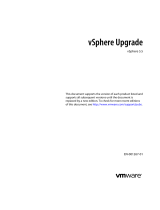
Contents
About This Guide.............................................................................................................................................. 4
Revision History..................................................................................................................................................................4
Audience..............................................................................................................................................................................4
Related Publications...........................................................................................................................................................4
Contacting Dell................................................................................................................................................................... 4
1 Installing DSITV..............................................................................................................................................5
Introduction to DSITV........................................................................................................................................................5
Software Requirements.....................................................................................................................................................5
Deploying DSITV................................................................................................................................................................ 5
Setting Up DSITV...............................................................................................................................................................6
Conguring the Time on the DSITV Virtual Appliance............................................................................................ 6
Logging In to DSITV..................................................................................................................................................... 7
Conguring DSITV Settings........................................................................................................................................7
Display the Current Version of DSITV..............................................................................................................................8
2 Replay Manager Service for VMware.............................................................................................................9
RMSV Data Migration........................................................................................................................................................9
Conguring RMSV............................................................................................................................................................. 9
3 Dell Storage vSphere Web Client Plugin........................................................................................................11
Installing the Dell Storage vSphere Web Client Plugin..................................................................................................11
Removing the vSphere Web Client Plugin......................................................................................................................11
A DSITV Application Troubleshooting.............................................................................................................. 12
Troubleshooting RMSV.................................................................................................................................................... 12
Restart RMSV.............................................................................................................................................................12
Save RMSV Log Files................................................................................................................................................. 12
Troubleshooting the vSphere Web Client Plugin...........................................................................................................13
Dell Storage Icon Is Missing.......................................................................................................................................13
Plugin Summary and Monitor Page Appears Disabled...........................................................................................13
Snapshot and Snapshot Schedule Creation Fails................................................................................................... 13
Cannot Enable Live Volume to Failover Automatically........................................................................................... 13
Failure When Creating NFS Datastores................................................................................................................... 13
Managing an NFS Datastore Created Outside the Plugin..................................................................................... 14
View vSphere Web Client Log Files..........................................................................................................................14
Registration Failure Related to TLS.......................................................................................................................... 14
Contents
3















